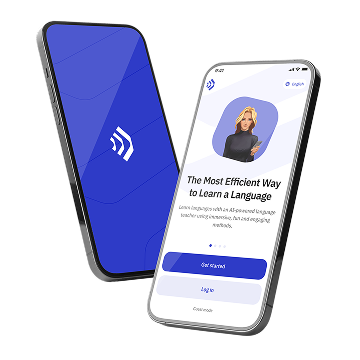Tuscany, or Toscana in Italian, is perhaps the most famous wine region in Italy. Known for its rolling hills, cypress trees, and medieval towns, Tuscany is the birthplace of some of the world’s most esteemed wines, including Chianti, Brunello di Montalcino, and Vino Nobile di Montepulciano.
As you explore this region, familiarize yourself with some basic Italian wine terminology. For example, a vineyard is called a “vigneto” and a winery is known as a “cantina.” When tasting wine, you might come across terms like “fruttato” (fruity), “secco” (dry), and “corposo” (full-bodied).
While visiting a Tuscan vineyard, you might hear:
– “Vorrei assaggiare il vino locale, per favore.” (I would like to taste the local wine, please.)
– “Qual è il vostro vino più famoso?” (What is your most famous wine?)
In addition to wine tasting, Tuscany offers a wealth of cultural experiences. Visit the historic city of Florence, the medieval town of Siena, or the picturesque village of San Gimignano. Learning a few key phrases can make your explorations more rewarding:
– “Dove si trova il Duomo?” (Where is the Cathedral?)
– “Quanto costa il biglietto d’ingresso?” (How much is the entrance ticket?)
Piedmont: Land of Barolo and Barbaresco
Moving to the northwest, Piedmont, or Piemonte, is another illustrious wine region. This area is home to the famed Barolo and Barbaresco wines, both made from the Nebbiolo grape. The landscape here is characterized by the rolling hills of the Langhe, Roero, and Monferrato areas, which are dotted with charming villages and ancient castles.
When visiting Piedmont, it’s useful to know some Italian expressions related to wine. You might hear:
– “Questo vino ha un sapore intenso.” (This wine has an intense flavor.)
– “Mi può parlare di questo vino?” (Can you tell me about this wine?)
Exploring the region’s capital, Turin, you could use phrases such as:
– “Dove posso trovare una buona enoteca?” (Where can I find a good wine bar?)
– “Mi può consigliare un buon ristorante?” (Can you recommend a good restaurant?)
Beyond wine, Piedmont is also known for its rich culinary traditions. Don’t miss the chance to try local specialties like white truffles and hazelnuts. You might find these phrases helpful:
– “Che tipo di formaggi avete?” (What kinds of cheese do you have?)
– “Posso avere il menu, per favore?” (Can I have the menu, please?)
Veneto: Prosecco and So Much More
In the northeast of Italy lies Veneto, a region celebrated for its sparkling Prosecco and robust Amarone wines. The area around Valdobbiadene is particularly famous for Prosecco, while Valpolicella is renowned for its Amarone.
When visiting Veneto, you might want to say:
– “Vorrei provare il Prosecco della zona.” (I would like to try the local Prosecco.)
– “Qual è la differenza tra Amarone e Valpolicella?” (What is the difference between Amarone and Valpolicella?)
Veneto is also home to Venice, one of the most romantic cities in the world. While wandering through its canals and historic squares, knowing a few Italian phrases can be very useful:
– “Dov’è Piazza San Marco?” (Where is St. Mark’s Square?)
– “Come si arriva al Ponte di Rialto?” (How do you get to the Rialto Bridge?)
Don’t forget to explore the regional cuisine, which includes dishes like risotto and polenta. Useful phrases might include:
– “Qual è il piatto del giorno?” (What is the dish of the day?)
– “Avete piatti vegetariani?” (Do you have vegetarian dishes?)
Sicily: The Island of Sun and Wine
Sicily, or Sicilia, is the largest island in the Mediterranean and a region with a vibrant wine culture. Famous for its Nero d’Avola and Marsala wines, Sicily’s winemaking history dates back to ancient times. The island’s diverse climate and volcanic soil contribute to the unique flavors of its wines.
As you tour Sicily’s wineries, you might use phrases like:
– “Questo vino è molto aromatico.” (This wine is very aromatic.)
– “Posso visitare la cantina?” (Can I visit the winery?)
Sicily is also known for its rich history and stunning landscapes. While exploring ancient ruins or beautiful beaches, you could use:
– “Dove si trova il teatro greco?” (Where is the Greek theater?)
– “Qual è la spiaggia più vicina?” (Where is the nearest beach?)
The island’s cuisine is another highlight, featuring dishes like arancini, caponata, and cannoli. Useful phrases for dining out include:
– “Mi può portare il conto, per favore?” (Can you bring me the bill, please?)
– “Che cosa mi consiglia?” (What do you recommend?)
Apulia: The Heel of Italy’s Boot
Apulia, or Puglia, is located in the southeastern part of Italy, forming the heel of the country’s boot. Known for its robust red wines, such as Primitivo and Negroamaro, Apulia offers a unique wine-tasting experience with its sun-drenched vineyards and olive groves.
While visiting Apulia, you might say:
– “Vorrei degustare il Primitivo.” (I would like to taste the Primitivo.)
– “Quali altri vini producete?” (What other wines do you produce?)
In addition to wine, Apulia is famous for its whitewashed towns, stunning coastline, and delicious cuisine. Useful phrases for exploring the region include:
– “Dove posso parcheggiare?” (Where can I park?)
– “C’è un mercato locale qui vicino?” (Is there a local market nearby?)
When dining, you might want to try local dishes like orecchiette pasta and fresh seafood. Phrases that could come in handy include:
– “Avete piatti senza glutine?” (Do you have gluten-free dishes?)
– “Posso avere un bicchiere di vino rosso?” (Can I have a glass of red wine?)
Learning Italian Through Wine Culture
Exploring Italy’s wine regions provides an excellent opportunity to learn Italian in a fun and immersive way. By engaging with the local culture, you can practice your language skills in real-life situations, making the learning process more enjoyable and effective.
Here are some tips for integrating Italian language learning into your wine-tasting adventures:
1. Take Language Classes or Use Apps
Before your trip, consider taking Italian language classes or using language learning apps like Duolingo, Babbel, or Rosetta Stone. These resources can help you build a foundation in Italian and familiarize yourself with basic vocabulary and grammar.
2. Practice Speaking with Locals
One of the best ways to learn a language is by speaking it with native speakers. Don’t be afraid to strike up conversations with locals, whether you’re at a winery, restaurant, or market. Italians are generally very welcoming and appreciative of visitors who make an effort to speak their language.
3. Use Wine as a Learning Tool
Wine-related vocabulary can be a great starting point for learning Italian. Familiarize yourself with terms related to wine production, tasting, and regions. Practice using these words in sentences and conversations.
4. Immerse Yourself in Italian Media
While traveling, immerse yourself in Italian media, such as TV shows, movies, and music. This will help you get used to the sound and rhythm of the language. Additionally, reading Italian books or articles about wine can enhance your vocabulary and comprehension.
5. Keep a Language Journal
Maintain a journal where you write down new words and phrases you learn each day. Try to use these words in sentences and review them regularly. This practice can reinforce your learning and help you retain new vocabulary.
Conclusion
Exploring Italy’s wine regions offers not only a delightful sensory experience but also a valuable opportunity to learn Italian. By immersing yourself in the local culture, practicing with native speakers, and using wine-related vocabulary as a learning tool, you can enhance your language skills while enjoying some of the world’s finest wines. Whether you’re wandering through the vineyards of Tuscany, sipping Prosecco in Veneto, or savoring Nero d’Avola in Sicily, speaking Italian will enrich your experience and deepen your connection to Italy’s rich heritage. Buon viaggio e salute! (Safe travels and cheers!)






